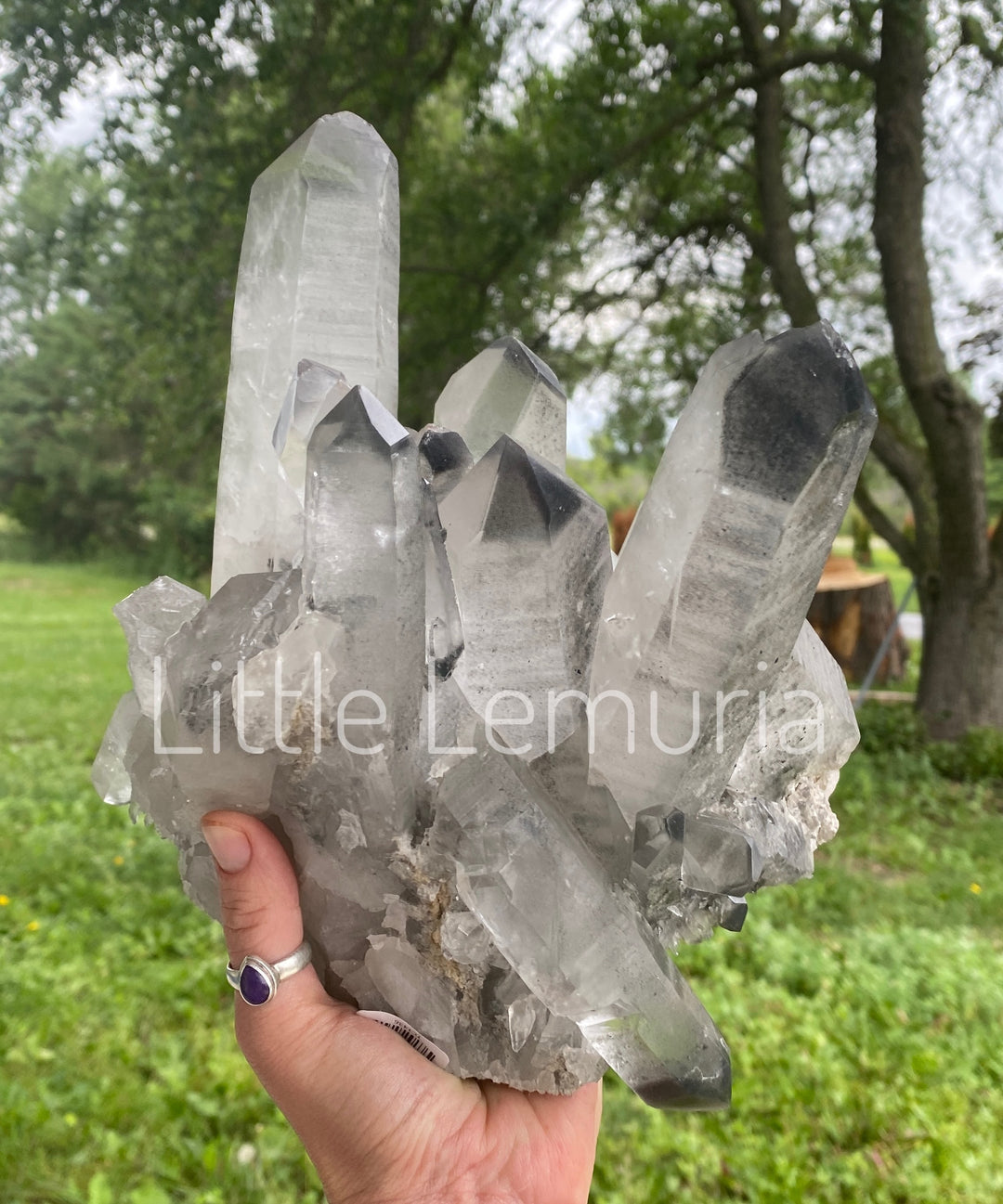My journey of Healing Through Hindu Mythology
There are times I am so smitten by my journey into Hindu mythology that I wonder how I ever got along without it. I was raised in a Christian household that some might consider disturbing. I attended Bible studies, servant camps, mission trips, and of course weekly church service. In addition to this, my family was part of what the media has called a “Christian cult”. The People of Praise was a big part of my teenage life. It was the type of group where getting slain in the spirit and speaking in tongues was just a normal part of a weekday evening social. It was commonplace to be surrounded by people laying on the ground, covered in thin blankets, and loudly speaking gibberish into the ether. My spiritual beginnings were bizarre, misled, and utterly unfulfilling.

Perhaps growing up surrounded by extreme religious practices allowed me to be more accepting of the strange and unusual as an adult. After all, these were just humans attempting to be closer to the divine through prayer, worship, ritual, and scripture. What was unreasonable to me was that these radical practices were programed into people using fear, manipulation, and judgement. Through the church I had been sexually abused, emotionally abused, and eventually cast aside because I did not conform to their standards. It wasn’t until I began soul searching through Hindu mythology that I started on the path of complete forgiveness. Only now am I able to read the Bible and talk about the church without resentment and anxiety.

Joseph Campbell said in The Power of Myth: “Myths are clues to the spiritual potentialities of the human life.” This has changed my approach to understanding mythology and the Hindu Pantheon. If you approach deities historically, or even theologically, you can quickly be derailed. India is a vast country with an ancient history. India has over 1.2 million square miles of earth to call home, and it’s not surprising that mythologies vary from region to region. Ganesha, for example, does not appear in Vedic scriptures, nor does he appear in the ancient epics Mahabharata or Ramayana. Ganesha was in fact added in at the beginning of the Mahabharata some 150 years after the epic was first put in writing. In southern India, the Mahabharata still omits the legend of Ganesha. That is only one of thousands of discrepancies that run like a maze throughout Hindu myth.

Why is there no outcry about these inconsistencies? If this was the Christian church, there would be utter chaos if someone suggested such blasphemy as adding a story to the Bible after it was compiled. The difference is that Hindu’s are worshipping a divinity that is evolving and Christians are worshipping a divinity that has stayed the same since its conception. Where Hindu mythology debates “what is the lesson to be learned”, Christian church debates “who/what is right and who/what is wrong”. When you’re told that eternal damnation is on the line, it becomes a fight for spiritual survival to make sure you are correct. In contrast, having several lifetimes to learn lessons and connect with the divine leads to an organic pursuit of what is spiritually fulfilling and good for the soul.

Hinduism has Gods and Goddesses, gods and goddesses, avatars, demons, sages, and more. Each of these characters are aspects of the divine, which is all part of Brahman, the Source. Brahman is Atman, the soul, so if the soul is the Source then each of us is ultimately divine. In the words of Alan Watts “Through our eyes, the universe is perceiving itself. Through our ears, the universe is listening to its harmonies. We are the witnesses through which the universe becomes conscious of its glory, of its magnificence.” Deities are an interpretation of the divine aspects of ourselves that go beyond our scope of understanding. By making these aspects human-like, giving them a story, and saturating them with intentional symbolic imagery, we become aware of the endless divine potential within us all.

Each deity I connect with starts as a golden thread in my mind. This golden thread is perfect in every way accept it is too tangled to be useful. I visualize the thread and see its beauty, but with the thread in knots it only has the potential becoming a part of a tapestry. As I work with a deity through stories and images, I begin to straighten the thread. The knowledge and insight I gain shows me how to untangle the strand. When I am finished, I place the thread in my personal divine tapestry that contains all that I have come to know about my divine self. The bigger and stronger my tapestry is, the greater protection it is against spiritual warfare, ignorance, and fear.

I know that Hanuman is in my tapestry ready to selflessly defend what is right. I know that Ganesha is in my tapestry seeing through the challenges in front of me so that I can overcome any obstacle. I know that Saraswati is in my tapestry carefully preserving the knowledge and insight I have gained this lifetime. I know that Lakshmi is in my tapestry conspiring in my favor to manifest abundance. I know that Krishna is in my tapestry ready to offer me love and acceptance at any time. These are all aspects that exist in you and in me. Somehow it is difficult to honor these aspects alone, but with a little help from some colorful friends you’d be amazed at all you will discover in yourself that just needs a little untangling.
*Originally written for K. Mcmurray's Portals Newsletter. To subscribe click HERE






